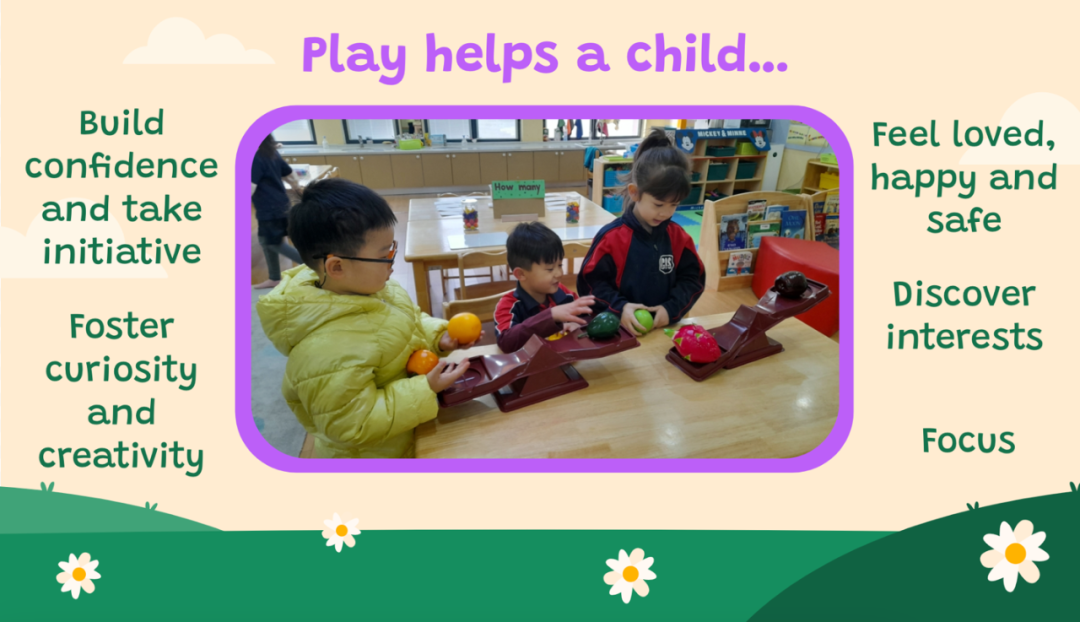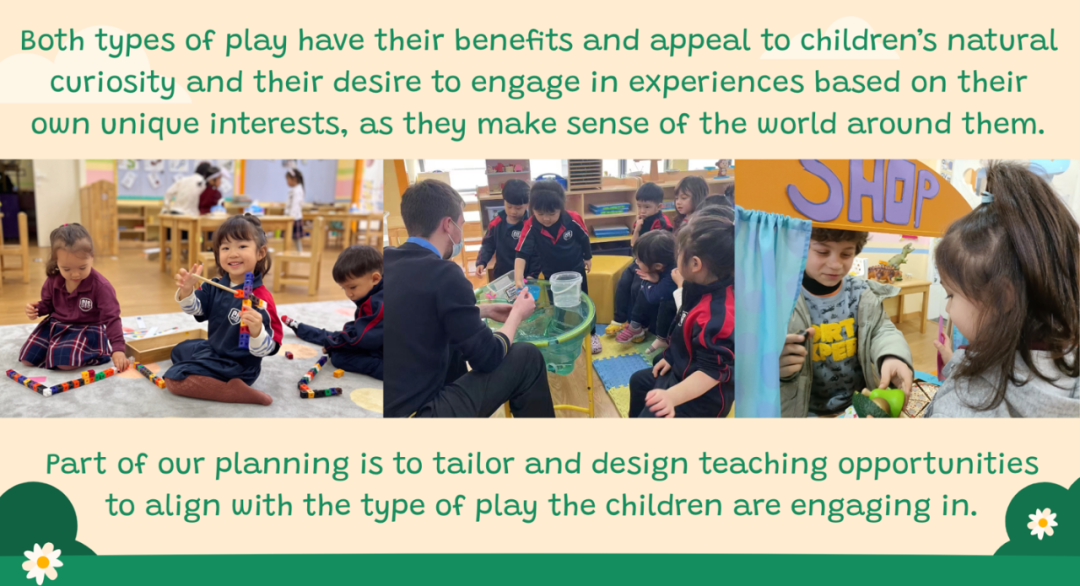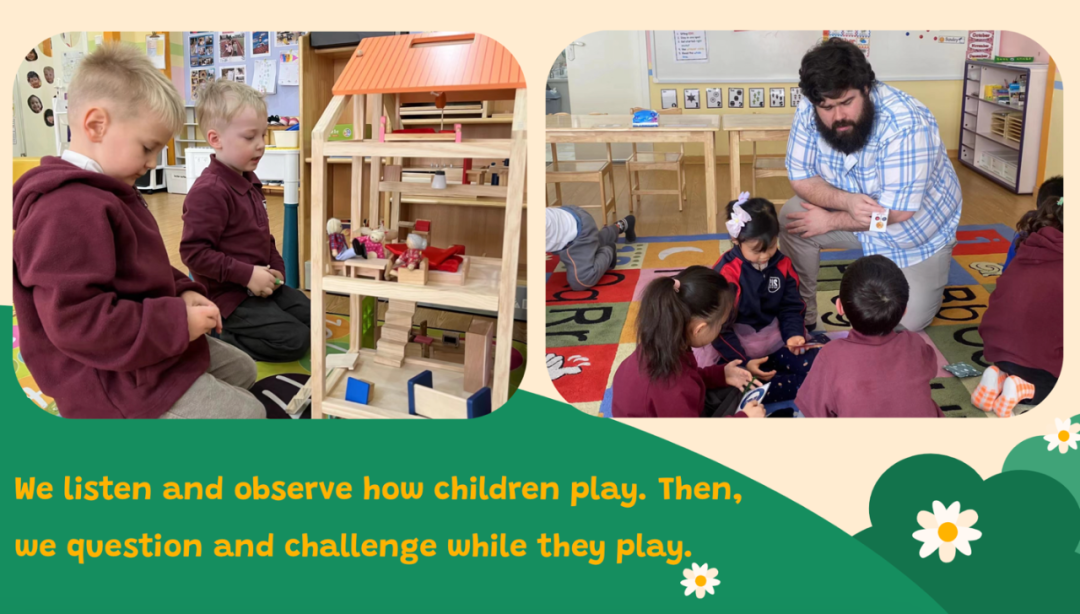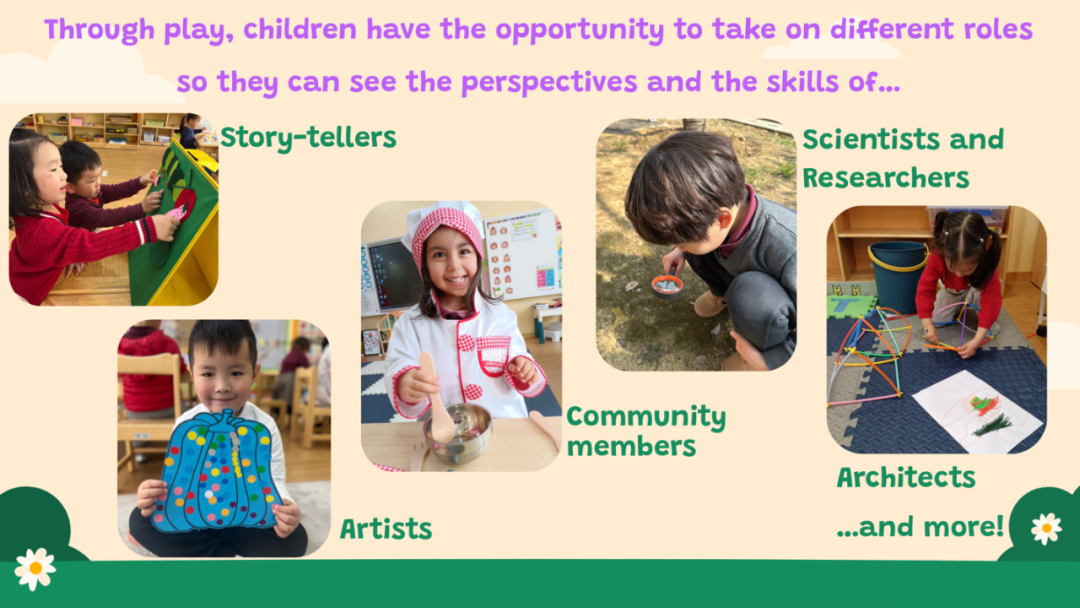What can be more powerful than when education, curiosity, and play come together to support teaching and learning?
Play-based learning in Early Years classrooms is a critical form of how children learn and make sense of the world around them.
There are four pillars of the Early Years in PYP – symbolic exploration and expression, relationships, learning spaces, and play. These are the key elements that make up an effective and authentic education for our young learners.
What is play?
Play is the universal language of children. It’s what children naturally do when they are given freedom, time, and space. It’s engaging, hands-on, busy, messy, and most importantly… FUN!

Play also builds important skills:
•Self-management
•Social
•Communication
•Thinking
•Research
•Physical
What are the types of play?
There is unstructured and structured play.
What is unstructured play?
Unstructured play or free play involves a child or children being given the freedom to play. Children choose toys, blocks, dress-up clothes, or they get to choose what they want to play outdoors, the slide, swings, or a game, even a game they make up. If you’ve ever watched a young child play freely, you’ll recognize that it’s hard work and messy. Children are busy; they mix toys up and use their imaginations.
What is structured play?
Structured play is student-centered and adult-directed. The teacher organizes the play for the students, and it will likely be aligned to a skill or curriculum outcome. Children may rotate to various stations and play with blocks or building materials set out for them to use, but it is designed to teach.

At CISH our teachers strive to facilitate learning through play. We use an inquiry-based approach to guide and engage students by using provocations, questioning, experimentation, exploration, and the use of critical and creative thinking.

We give students a safe and engaging environment to unpack important questions and ideas about themselves and the world around them. We prioritize positive and effective relationship building to model key characteristics and habits, as well as to build trust and respect. All of these contribute to students feeling safe, open-minded, and motivated to learn.

Play enables children to experience new perspectives, build skills, improve their curiosity and creativity, challenge their thinking, build a growth mindset, and become future-proof in a world increasingly shaped by technology and AI. If we want our children to be successful in a world where information is accessible at the touch of a button, we need to ensure that they have the skills and capacity to stand out against the masses and create their own future.






